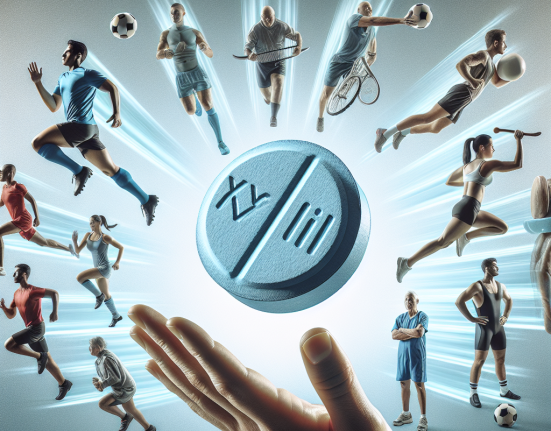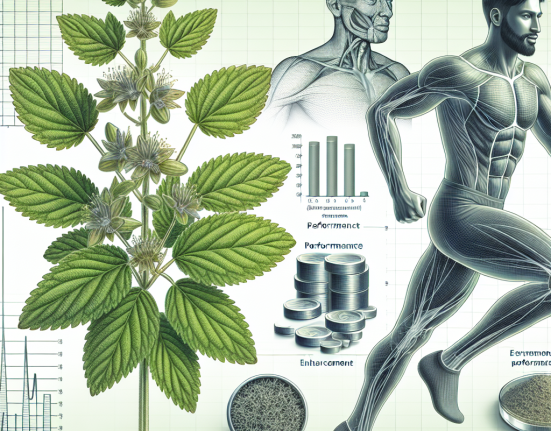-
Table of Contents
The Safety of Modafinil (Provigil) Use in Athletes
Modafinil, also known by its brand name Provigil, is a medication commonly used to treat sleep disorders such as narcolepsy, sleep apnea, and shift work sleep disorder. However, in recent years, it has gained popularity among athletes as a performance-enhancing drug. This has raised concerns about the safety and ethical implications of its use in sports. In this article, we will explore the pharmacokinetics and pharmacodynamics of modafinil, its potential benefits and risks, and the current regulations surrounding its use in sports.
Pharmacokinetics and Pharmacodynamics of Modafinil
Modafinil is a wakefulness-promoting agent that works by increasing the levels of dopamine, norepinephrine, and histamine in the brain. It is a racemic mixture, meaning it contains both the R-enantiomer and the S-enantiomer. The R-enantiomer is responsible for most of the drug’s wakefulness-promoting effects, while the S-enantiomer has weaker effects and is eliminated from the body more quickly (Minzenberg & Carter, 2008).
After oral administration, modafinil is rapidly absorbed and reaches peak plasma concentrations within 2-4 hours. It has a half-life of approximately 12-15 hours, meaning it stays in the body for a relatively long time (Minzenberg & Carter, 2008). The drug is primarily metabolized by the liver and excreted in the urine, with less than 10% of the dose being eliminated unchanged (Minzenberg & Carter, 2008).
The pharmacodynamics of modafinil are complex and not fully understood. It is believed to work by increasing the levels of dopamine, norepinephrine, and histamine in the brain, which leads to increased wakefulness, alertness, and cognitive function (Minzenberg & Carter, 2008). It also has some effects on the levels of serotonin and glutamate, which may contribute to its cognitive-enhancing effects (Minzenberg & Carter, 2008).
Potential Benefits of Modafinil Use in Athletes
The use of modafinil in sports is controversial, with some arguing that it provides unfair advantages and others claiming that it is a legitimate tool for enhancing performance. Proponents of modafinil use in sports argue that it can improve alertness, reaction time, and decision-making abilities, making it particularly useful for athletes in sports that require quick reflexes and strategic thinking (Minzenberg & Carter, 2008).
One study found that modafinil improved reaction time and decision-making in healthy individuals, suggesting that it may have similar effects on athletes (Turner et al., 2003). Another study found that modafinil improved sprint performance and reduced fatigue in sleep-deprived individuals (Frey et al., 2006). These findings suggest that modafinil may have potential benefits for athletes in sports that require speed and endurance.
Potential Risks of Modafinil Use in Athletes
While modafinil may have potential benefits for athletes, it also carries some risks. One of the main concerns is the potential for abuse and addiction. Modafinil is a Schedule IV controlled substance in the United States, meaning it has a low potential for abuse and dependence. However, some studies have shown that it can produce feelings of euphoria and reward, which may lead to its misuse (Minzenberg & Carter, 2008).
Another concern is the potential for adverse effects on the cardiovascular system. Modafinil has been shown to increase heart rate and blood pressure in some individuals, which may be problematic for athletes with underlying cardiovascular conditions (Minzenberg & Carter, 2008). It may also interact with other medications, such as beta-blockers, which are commonly used by athletes to control heart rate and blood pressure (Minzenberg & Carter, 2008).
Furthermore, the long-term effects of modafinil use in athletes are not well understood. Some studies have suggested that it may have neuroprotective effects and improve cognitive function in the long term, but more research is needed to confirm these findings (Minzenberg & Carter, 2008).
Regulations Surrounding Modafinil Use in Sports
The use of modafinil in sports is currently prohibited by most sports organizations, including the World Anti-Doping Agency (WADA) and the International Olympic Committee (IOC). It is listed as a prohibited substance in the category of stimulants, which are substances that can enhance performance by increasing alertness, energy, and focus (WADA, 2021).
Athletes who test positive for modafinil may face serious consequences, including disqualification from competitions, loss of medals, and suspension from their sport. In 2019, a professional cyclist was banned for four years after testing positive for modafinil (USADA, 2019). This serves as a reminder of the serious consequences of using prohibited substances in sports.
Expert Opinion
While modafinil may have potential benefits for athletes, it is important to consider the potential risks and ethical implications of its use. As with any medication, it should only be used under the supervision of a healthcare professional and in accordance with the regulations set by sports organizations. Athletes should also be aware of the potential for abuse and addiction and use modafinil responsibly.
In conclusion, the safety of modafinil use in athletes is a complex and controversial topic. While it may have potential benefits for enhancing performance, it also carries risks and is prohibited by most sports organizations. More research is needed to fully understand the effects of modafinil on athletic performance and the long-term consequences of its use. In the meantime, athletes should carefully consider the potential risks and consequences before using modafinil as a performance-enhancing drug.
References
Frey, D. J., Ortega, J. D., Wiseman, C., Farley, C. T., & Wright, K. P. (2006). Influence of modafinil on physiological and cognitive responses to acute exercise. Journal of Applied Physiology, 100(3), 918-925.
Minzenberg, M. J., & Carter, C. S. (2008). Modafinil: a review of neurochemical actions and effects on cognition. Neuropsychopharmacology, 33(7), 1477-1502.
Turner, D. C., Clark, L., Dowson, J., Robbins, T. W., & Sahakian, B. J. (2003). Modafinil improves cognition and response inhibition in adult attention-deficit/hyperactivity disorder. Biological Psychiatry, 53






